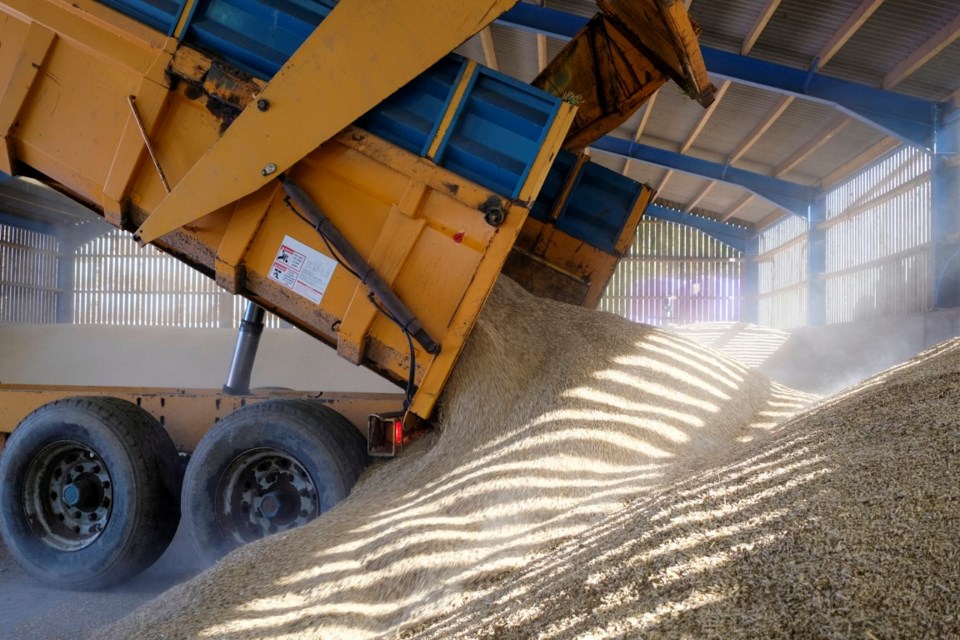WESTERN PRODUCER — Crop markets are focused on two things: the latest production forecasts as the Northern Hemisphere harvest of spring-seeded crops begins; and worries that the fight against inflation will push world economies into recession.
Wheat and oilseed futures are steady, trading within a range for a month, while corn futures modestly rallied from the July low.
Several regions of the world have or are experiencing extreme weather this summer that has damaged crop production, but the potential for these events to ignite a global crop price rally is offset by signs that economic growth is being extinguished by inflation-fighting interest rate hikes.
An example of these two forces is seen in the Chicago corn futures market.
Several recent private crop tours and surveys show American corn yield potential lower than the United States Department of Agriculture August forecast of 175.4 bushels per acre.
The ProFarmer tour pegged yield at 168.1 bu., Gro Intelligence yield model had it at 167.2 and Allendale producer survey put it at 172.4 bu.
These forecasts are all bullish for prices. Also, there is increasing confirmation that the excessively hot summer in much of Europe pushed the corn crop there to 60 million tonnes or less, down from about 71 million tonnes last year.
Worries about corn production helped lift the December corn contract from the July 22 low close of US$5.64 1/4 to an Aug. 29 high above $6.80.
But further rises stalled after U.S. Federal Reserve chair Jerome Powell made it clear at the central bank’s annual symposium in Jackson Hole, Wyoming, Aug. 26 that fighting inflation remained its top priority even if it means pain for businesses and households.
Stock markets fell hard in the days following the Fed meeting.
Analysts expect the Bank of Canada to hike interest rates Sept. 7 and the Fed will likely do it Sept. 20-21.
Worries about the global economy are compounded by Europe’s energy crisis as it faces soaring natural gas and electricity prices because Russia is restricting gas exports. And China’s economy is battered by intense heat and drought in the south that are straining its energy grid while its “zero COVID” policy keeps putting large areas of the country into lockdown, hurting consumer and business confidence.
While corn markets saw gains in August, wheat markets were mostly steady near the levels they were last fall and early winter before the run up triggered when Russia invaded Ukraine.
Production prospects are generally positive. Russia is harvesting a monster wheat crop and Canada and the United States are starting what are expected to be good harvests of spring wheat.
The prospects for Australia’s wheat are excellent.
Wheat markets are also pressured from the resumption of exports of Ukrainian wheat and corn by ship. Weather was mostly good for Ukraine’s crop this summer, but its ability to export remains at risk as it begins a counter offensive against Russian forces in the southern part of the country.
Oilseed futures are trading in a narrow range, limited by expectations for good soybean and canola harvests in North America and increased palm oil production this autumn in Indonesia and Malaysia.
Oilseeds are also pressured by crude oil prices that have fallen to the US$85-$95 per barrel range. Consumers think that is still expensive, but the Organization of Petroleum Exporting Countries and its allies (OPEC+) is now speculating that a looming recession will soon have supplies exceeding demand and that production cuts will be needed.
A wild card in international markets is the horrific monsoon flooding in Pakistan.
The government estimated a third of the country was under water and a food crisis looms. Cotton, rice and vegetable crops were wiped out.
Pakistan’s biggest crop is wheat planted in the fall and producing 25 million to 27 million tonnes.
The floods will likely complicate fall planting and there is a lot of uncertainty.
It is worth noting that there was massive flooding in 2010 but the country’s farmers, with help from international aid, managed to seed a fall crop and produce a near normal wheat harvest in 2011. However, this year’s flood is worse than 2010.
Brazil weather will soon capture the market’s attention. Brazil seeds its massive soybean and first corn crop in October-December.
Government forecaster Conab expects soybean-planted area will increase 3.5 percent to almost 105 million acres.
But La Nina still dominates the Pacific Ocean and tends to deliver dry, warm weather to southern Brazil and northern Argentina, which could cause planting and establishment problems. Normal to above normal moisture is expected in Brazil’s central and northern growing area.
La Nina also affected last year’s crops in Brazil and Argentina.
As Brazil’s soybeans were seeded last fall, production was forecast at 144 million tonnes. They harvested 126 million. Argentina was forecast to have a 52 million tonne soybean crop. It harvested 44 million.

